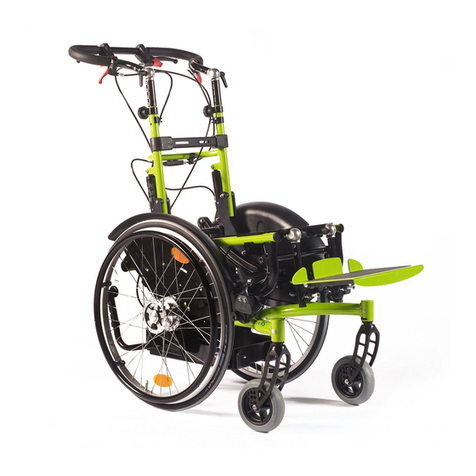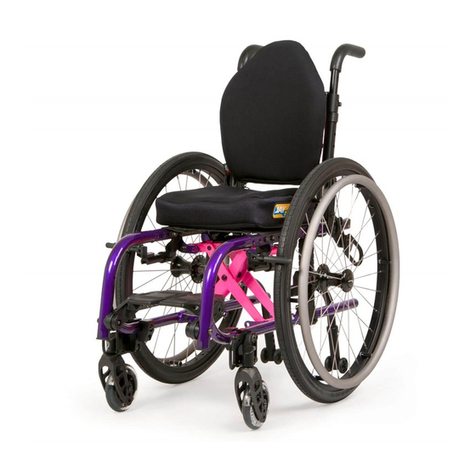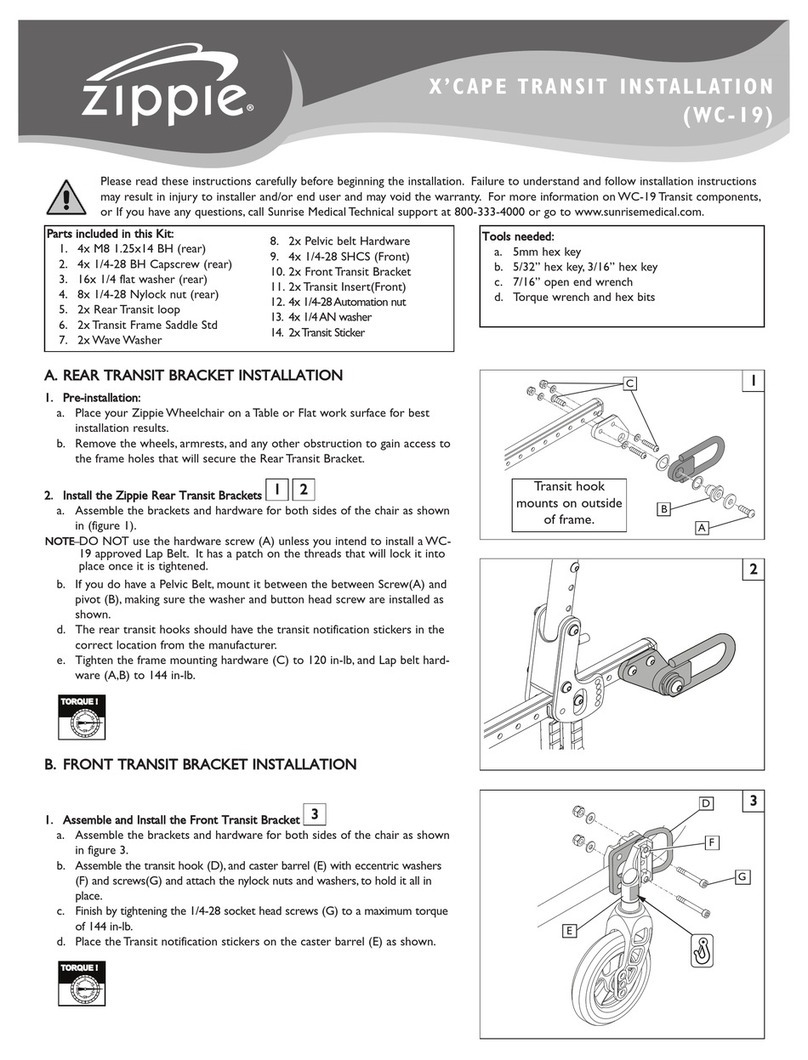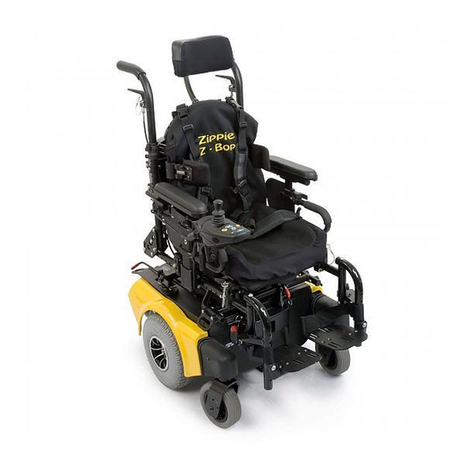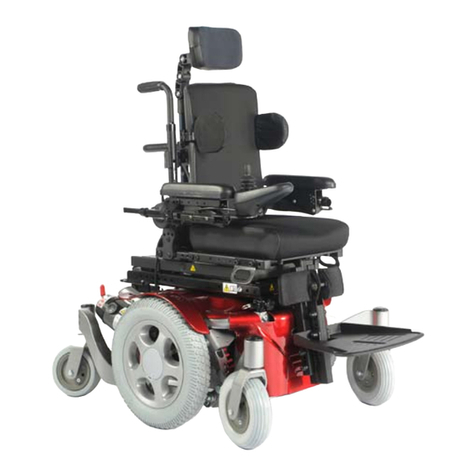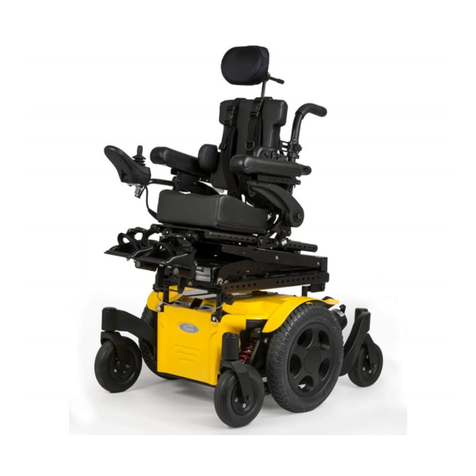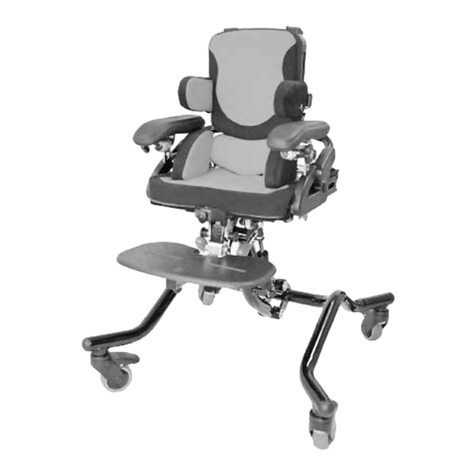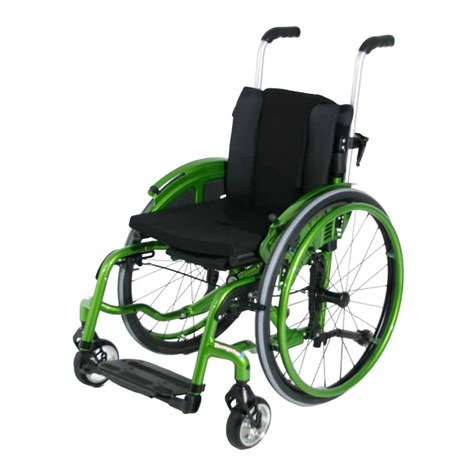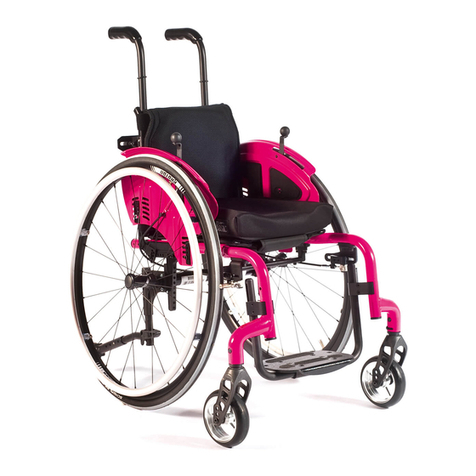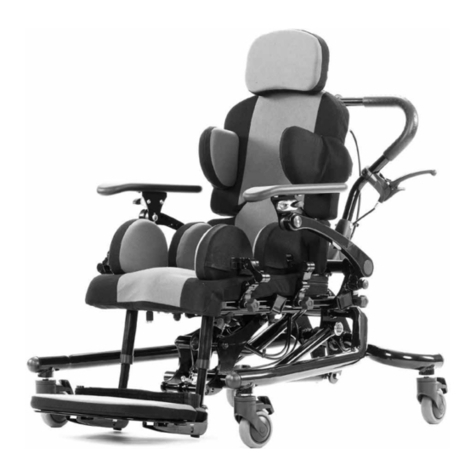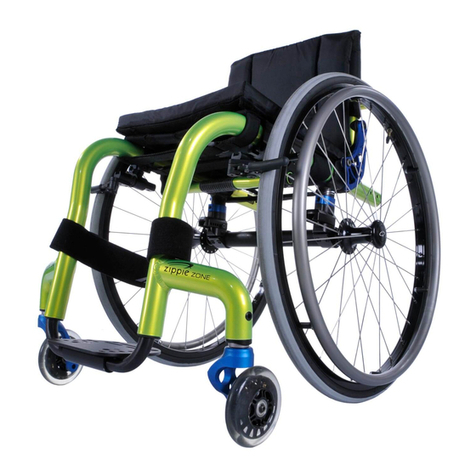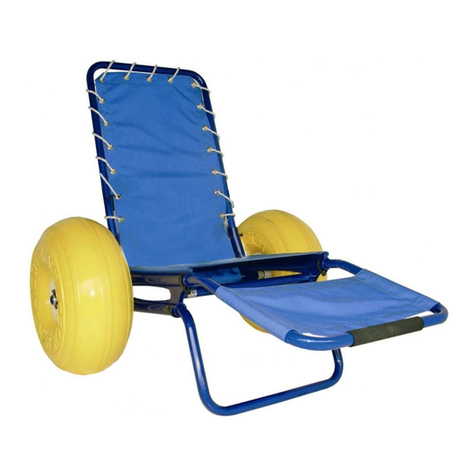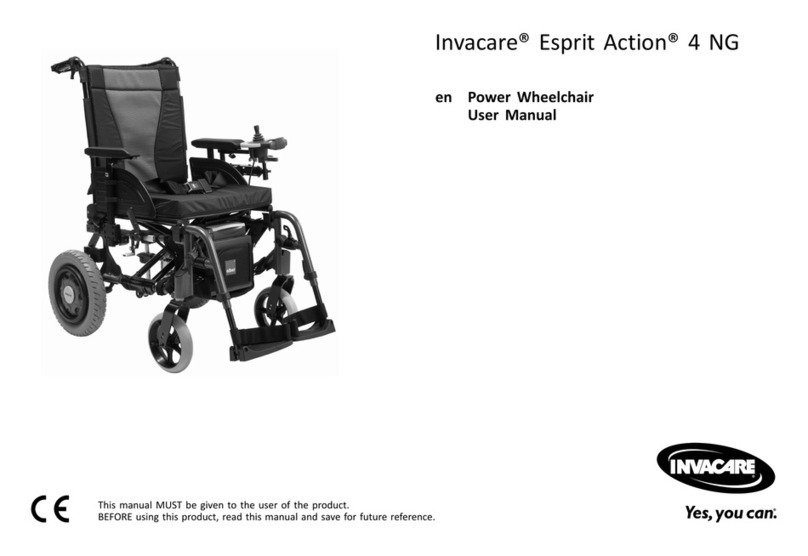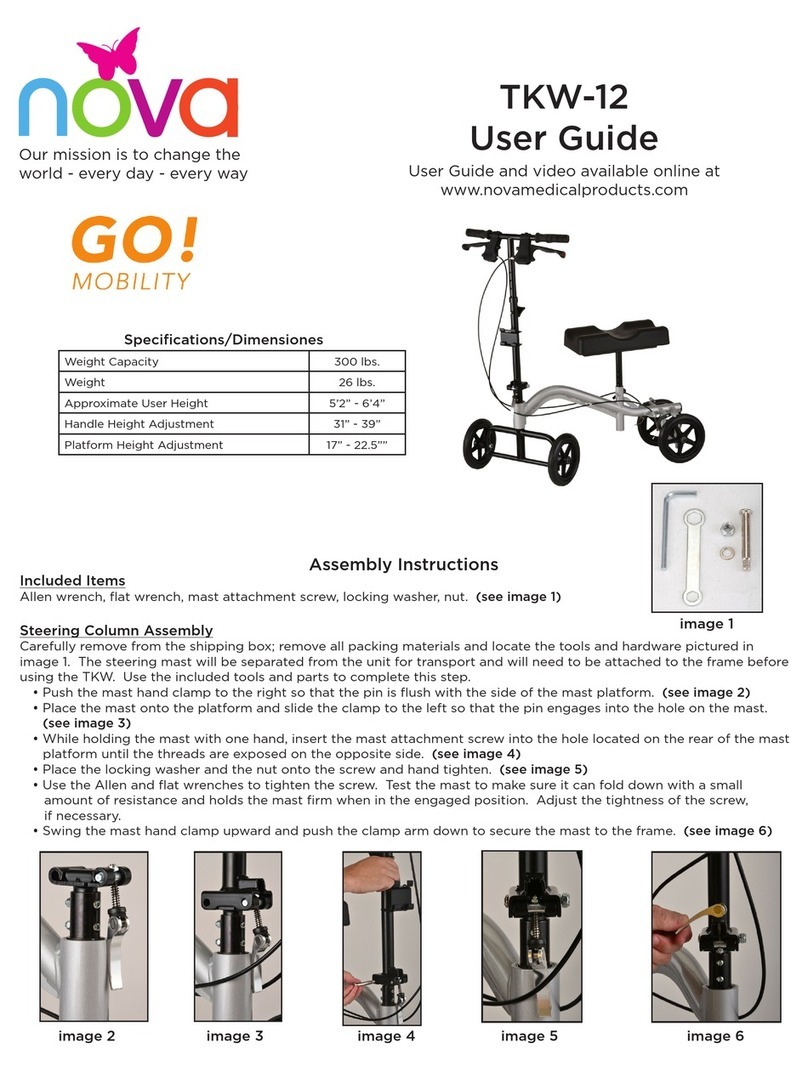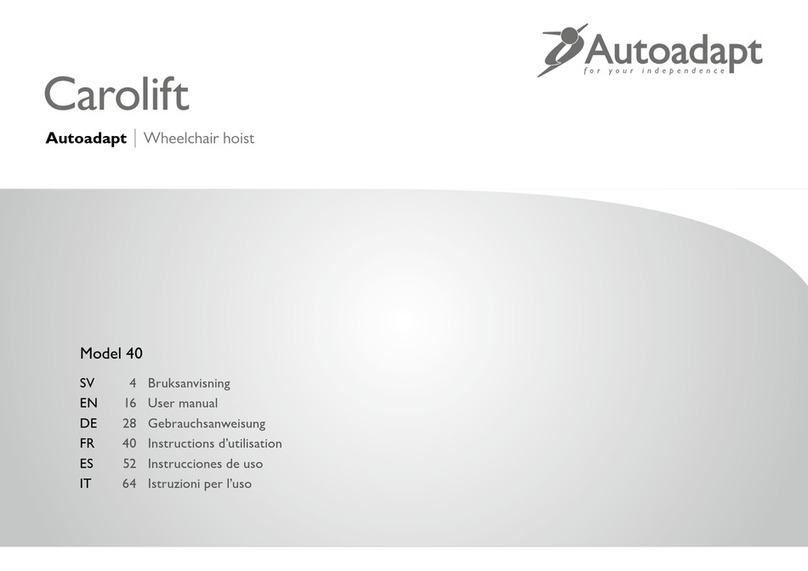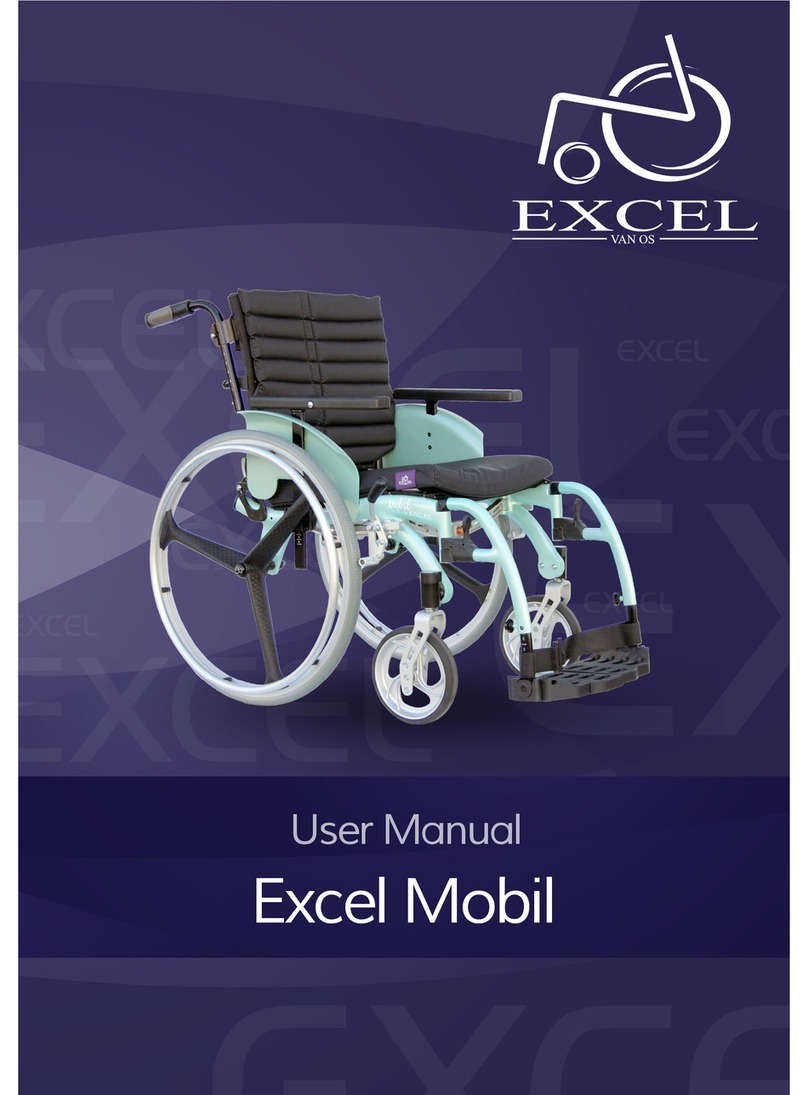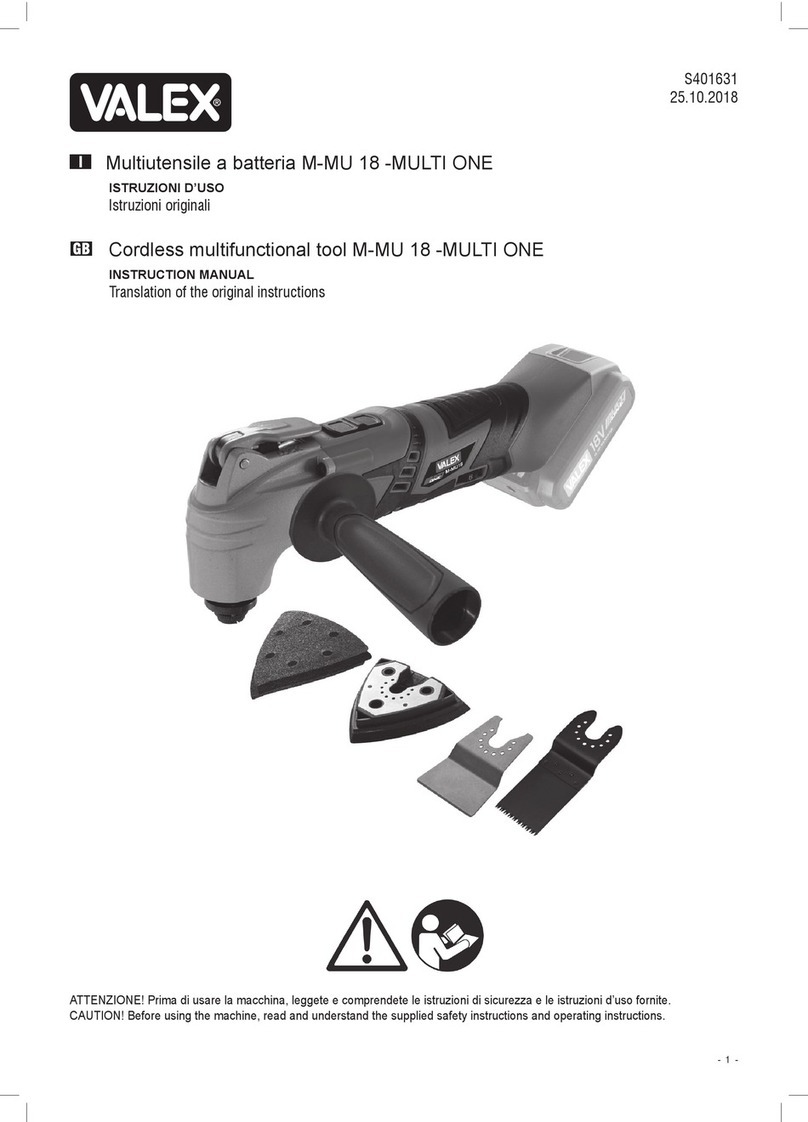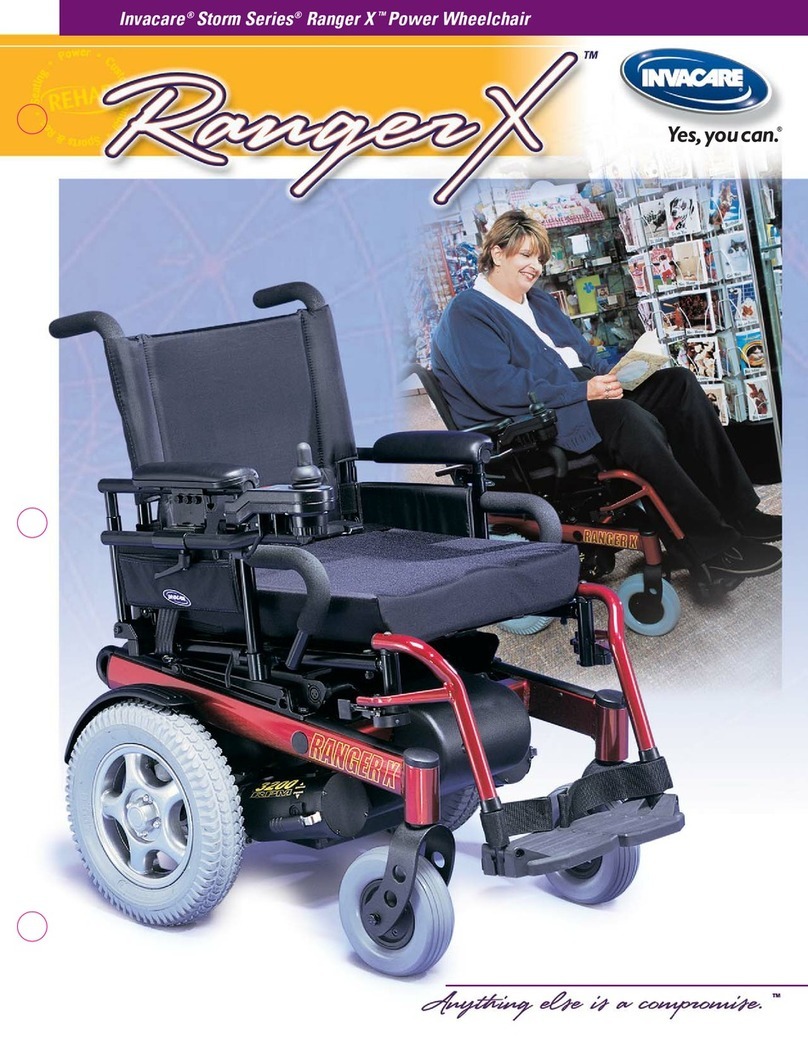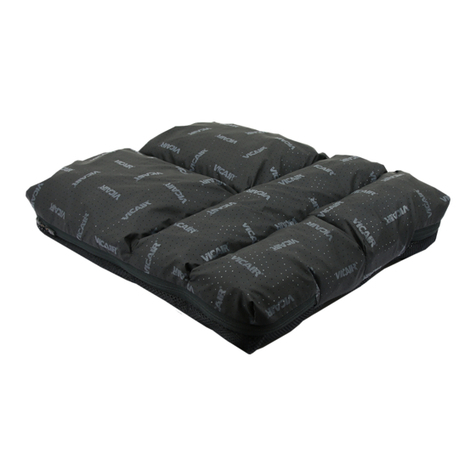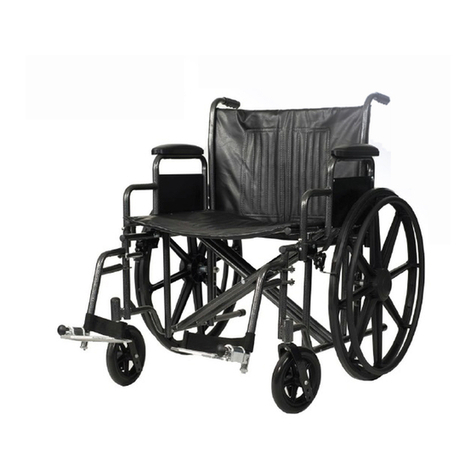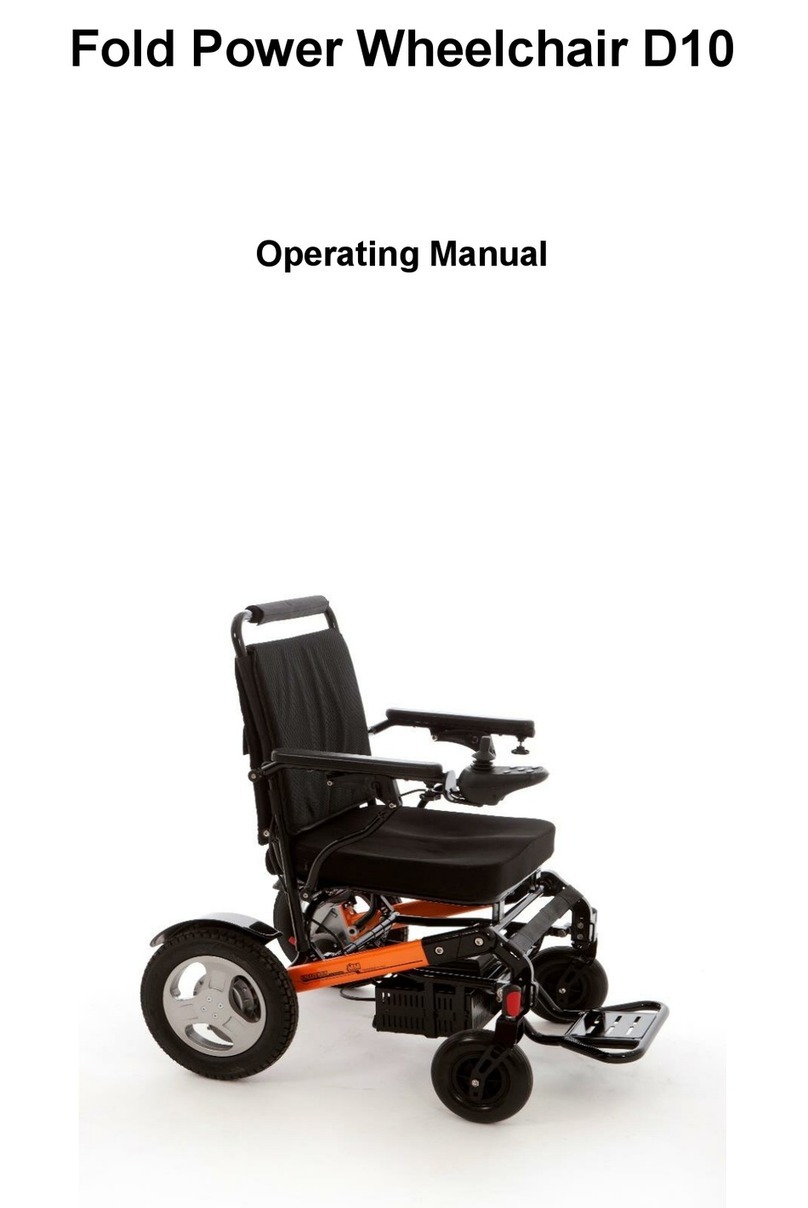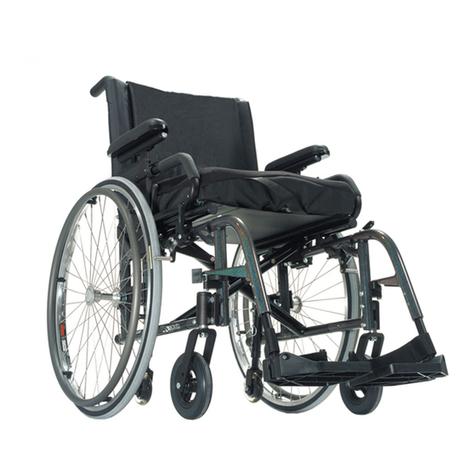
VI. SAFETY WARNINGS: FALLS & TIP-OVERS
ZIPPIE ZONE
A. CENTER OF BALANCE
WARNING
The point where this chair will tip forward, back or to the side depends on
its center of balance and stability. ow your chair is set up, the options
you select and the changes you make may affect the risk of a fall or tip-
over.
1. The Most Important Adjustment Is:
The position of the rear wheels. The more you move the rear
wheels forward, the more likely your chair will tip over backward.
2. The Center Of Balance Is Also Affected By:
a. A change in the set-up of your chair, including:
• The distance between the rear wheels.
• The amount of rear wheel camber.
• The seat height and seat angle.
• Backrest angle.
b. A change in your body position, posture or weight distribution.
c. Riding your chair on a ramp or slope.
d. A back pack or other options and the amount of added weight.
3. To Reduce The Risk Of An Accident:
a. Consult your doctor, nurse or therapist to find out what axle
and caster position is best for you.
b. Consult your authorized supplier BEFORE you modify or adjust
this chair. Be aware that you may need to make other changes
to correct the center of balance.
c. ave someone help you until you know the balance points of
your chair and how to avoid a tip-over.
d. Use anti-tip tubes.
If you fail to heed these warnings, you are at a high risk of a fall, tip-over
or loss of control that could cause severe injury to the rider or others.
B. DRESSING OR C ANGING CLOT ES
WARNING
Your weight may shift if you dress or change clothes while seated in this
chair.
To reduce the risk of a fall or tip-over:
1. Rotate the front casters until they are as far forward as possible.
This makes the chair more stable.
2. Lock anti-tip tubes in place. (If your chair does not have anti-tip
tubes, back it up against a wall and lock both rear wheels).
If you fail to heed this warning, damage to your chair, a fall, tip-over or loss
of control may occur and cause severe injury to the rider or others.
C. OBSTACLES
WARNING
Riding over curbs or obstacles can cause tipping and serious bodily harm.
If you have any doubt that you can safely cross any curb or obstacle,
ALWAYS ASK FOR ELP. Be aware of your riding skills and personal lim-
itations. Develop new skills only with the help of a companion.
To avoid the risk of traversing obstacles:
1. Keep a lookout for danger – scan the area well ahead of your chair
as you ride.
2. Make sure the floor areas where you live and work are level and
free of obstructions.
3. Remove or cover threshold strips between rooms.
4. Install a ramp at entry or exit doors. Make sure there is not a drop
off at the bottom of the ramp.
5. To elp Correct Your Center Of Balance:
a. Lean your upper body FORWARD slightly as you go UP over
an obstacle.
b. Press your upper body BACKWARD as you go DOWN from a
higher to a lower level.
6. If your chair has anti-tip tubes, do not go over an obstacle without
help.
7. Keep both of your hands on the handrims as you go over an obsta-
cle.
8. Never push or pull on an object (such as furniture or a doorjamb)
to propel your chair.
If you fail to heed these warnings damage to your chair, a fall, tip-over or
loss of control may occur and cause severe injury to the rider or others.
D. FRONT CASTER LIFT
WARNING
Front caster lift can occur when the front wheels, ordinarily in contact
with the ground, are either intentionally, or unintentionally caused to lift
from the ground while the rear wheels remain in contact. Pitch control
(partial or full) should NEVER be attempted without consulting your
healthcare advisor and making sure that anti-tips are installed.
If you fail to heed this warning, you are at a high risk of damage to your
chair, a fall, tip-over or loss of control that may occur and cause severe
injury to the rider or others.
E. REAC ING OR LEANING
WARNING
If you reach or lean it will affect the center of balance of your chair. This
may cause you to fall or tip over. When in doubt, ask for help or use a
device to extend your reach.
1. NEVER reach or lean if you must shift your weight sideways or rise
up off the seat.
2. NEVER reach or lean if you must move forward in your seat to do
so. Always keep your buttocks in contact with the backrest.
3. NEVER reach with both hands (you may not be able to catch your-
self to prevent a fall if the chair tips).
4. NEVER reach or lean to the rear unless your chair has anti-tip tubes
locked in place.
5. DO NOT reach or lean over the top of the seat back. This may
damage one or both backrest tubes and cause you to fall.
6. If You Must Reach Or Lean:
a. Do not lock the rear wheels. This creates a tip point and makes
a fall or tip-over more likely.
b. Do not put pressure on the footrests.
c. Move your chair as close as you can to the object you wish to
reach.
d. Do not try to pick up an object from the floor by reaching
down between your knees. You are less likely to tip if you
reach to the side of your chair.
e. Rotate the front casters until they are as far forward as possi-
ble. This makes the chair more stable.
f. Firmly grasp a rear wheel or an armrest with one hand. This
will help to prevent a fall if the chair tips.
If you fail to heed these warnings damage to your chair, a fall, tip-over or
loss of control may occur and cause severe injury to the rider or others.
F. MOVING BACKWARD
WARNING
Use extra care when you move your chair backward. Your chair is most
stable when you propel yourself forward. You may lose control or tip over
if one of the rear wheels hits an object and stops rolling.
1. Propel your chair slowly and smoothly.
2. If your chair has anti-tip tubes, make sure to lock them in place.
3. Stop often and check to be sure your path is clear.
If you fail to heed this warning, you are at a high risk of damage to your
chair, a fall, tip-over or loss of control that may occur and cause severe
injury to the rider or others.

